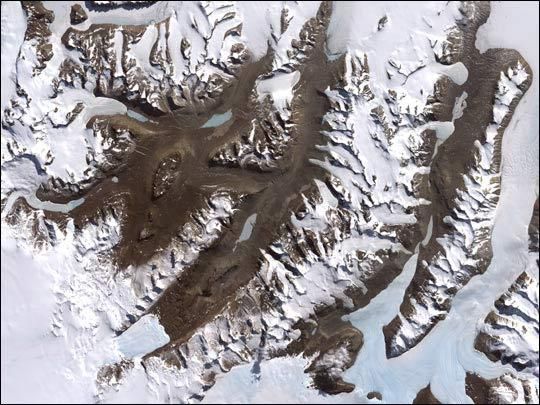
Drifting Antarctic Dunes Sign of Changing Climate

The greatest desert on Earth is not blazing hot but freezing cold: the icy wastes of Antarctica.
Now scientists find the speed at which sand dunes drift across the ground of this frigid desert has tripled in the past 40 years — a finding that could shed light on everything from the planet's warming climate to deserts on Mars.
Antarctica is not just the coldest of Earth's continents, but the driest and windiest. The scant areas that are free of snow and ice make up less than 0.4 percent of the continental land mass. In places there, the wind has built sand dunes.
The most extensive dune field is found in Victoria Valley, one of the McMurdo Dry Valleys, and it holds Antarctica's largest dune, 230 feet (70 meters) high and more than 650 feet (200 m) wide. [Infographic: Tallest Mountain to Deepest Ocean Trench]
Climate clues
Antarctica has been described as one of the most climatically sensitive ecosystems on Earth, meaning that one can look at changes there to help understand global trends in climate, explained geologist Charlie Bristow at Birkbeck College University of London. As such, evidence of changes "in the rates of physical processes that are climatically sensitive, such as the migration of sand dunes, is important," Bristow told OurAmazingPlanet.
Scientists also are investigating Antarctic dunes to learn more about the past; such cold-climate dunes covered large areas of northwest Europe at the end of the last Ice Age.
Sign up for the Live Science daily newsletter now
Get the world’s most fascinating discoveries delivered straight to your inbox.
In addition, Antarctic dunes could shed light on sand dunes on planets such as Mars, which is also very cold, dry and free of surface vegetation.
Bristow and his colleagues used ground-penetrating radar to image the layers of sand in the Victoria Valley dunes, showing how they built up over time. The researchers next used optically stimulated luminescence, a method that determines when objects were last exposed to daylight, to figure out when specific layers of sand were buried. This process wasn't always easy.
"One of the problems in the field was the wind, which rises during the day and becomes quite a problem when the sand starts to blow," Bristow said.
Five feet a year
The scientists found these dunes apparently are now migrating far more quickly across the surface than they have for centuries. The average rate that dunes there have migrated in the past 40 years is 5 feet (1.5 m) annually. The average annual rate over the approximately 1,300 years before then was 1.5 feet (0.45 m).
The researchers noted that this speed-up coincides with the modern rise in levels of atmospheric carbon dioxide, which traps heat from the sun and helps warm the planet. A warming climate in the Dry Valleys would loosen the ice cementing the dune sands in place, helping them to migrate faster.
In the future, the researchers would like to drill into the valley's larger dunes to get longer records from older deposits. They detailed their findings online Aug. 5 in the journal Geology.
This story was provided by OurAmazingPlanet, a sister site to LiveScience.












